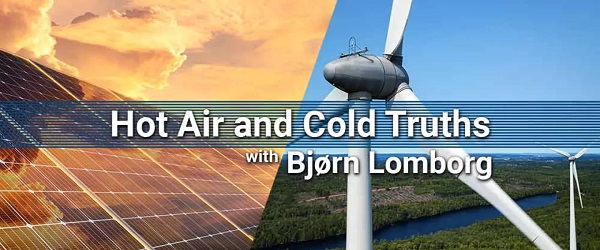Alberta
Class Action Lawsuit Against the Province of Alberta – Rath on Behalf of Ingram and Scott

|
|
To preface, the amount of knowledge I have in our legal system would fit into a thimble with a lot of room leftover to hold, well…a lot of other stuff that would fit into a thimble.
But I’m going to do my best to cover the certification hearing for the Class Action Lawsuit against the Province of Alberta by Rath and Company, on behalf of Rebecca Ingram and Chris Scott.
For the purposes of keeping this to a reasonable length, I’ll be hitting more along the lines of the high-notes instead of going through and summarizing the thousands of pages submitted by Rath and Co + the Province and keep to what I found most interesting throughout the 2 days I’d spent down at the courthouse viewing. The hearing was to allow both sides to submit their briefs and so that Justice Feasby could make sure that he understood the base of their cases, qualify information and take it away for judgement.
Even if Rath is successful in having this Class Action Certified, there is still a long road ahead to succeed in getting damages covered and a trial to be had and because of the specifics of the mishandling by the Province throughout the pandemic, if they are successful here, it doesn’t mean that every other province can proceed ahead, under the same criteria.
What does this mean?
The previous case against the Province with Rebecca Ingram, showed that the non-pharmaceutical interventions – lockdowns, businesses closed, capacity limits…were ruled Ultra Vires (beyond legal power or authority), by Justice Romaine…in that, these weren’t actually made by the Chief Medical Officer of Health (CMOH), Deena Hinshaw, they were made by Cabinet…and Cabinet hid behind Hinshaw issuing these orders under the Public Health Act instead of working with the Emergency Management Act.
Because of “Cabinet Privilege”, information was revealed by the CMOH and Justice Romaine – in camera (private) – we can only speculate the reasons for this.
One could argue that because the province and Alberta Health Services got 100% of everything wrong during the pandemic, that this was just another link in the very weak chain…
However, it’s also possible that the Cabinet Members making these decisions wanted to hide and remain hidden for political purposes, as in…those making the decisions to close down businesses didn’t want to have to face voters in a subsequent election, knowing the damages that they’d caused in the business community.
Seeing how many small businesses were closed down, to never reopen…savings spent, jobs and homes lost, lives impacted by these decisions, arguably touching every single person in the province, would make for some bad press and a constituencies filled with voters showing up with a chip on their shoulder towards those who made these decisions and still chose to run for Legislature again.
In addition to this…If the orders were run through the Emergency Management Act, all of the businesses impacted would be entitled to compensation, whereas under the Public Healthcare Act…they weren’t.
It’s based on these specificities that Rath argued that the Province acted in ‘Bad Faith’ as the basis for their case, in that, the province made decisions that they didn’t have the authority to make and absolutely had to have known would harm businesses and made them through the PHA which restricted these businesses from being compensated.
Rath had completed his presentation of their brief before lunch on the first day, where Feasby had a couple of points that he wanted clarified…which was completed after lunch on this same day.
And then…the Province took the podium.
As I’d previously stated, this was a bloodbath for the afternoon of Day 1 and continued on throughout their presentation on Day 2, where by Feasby openly mocked each member of the Province – Dube, Chu and Flanders.
Rightfully so, if I might add, because a lot of their logic was illogical and even to those of us in the gallery, laughable both with and without comments from the Justice.
On day 2, because of the chorus of opened mouthed guffaw from the gallery, we’d all received a warning try and keep it down.
Arguments made by the province which were stunning and laughable:
- The public does have a right to accountability and that these would be ‘Ballot Box Issues’, of course recognizing that Cabinet was the ones who made these decisions but because they were hidden behind Cabinet Confidence, we can’t actually have accountability, which of course Dube knew;
- The Plaintiffs (Rath on behalf of Ingram and Scott) needed to name the members responsible – which were, again, hidden by cabinet confidence;
- There is no fiduciary accountability afforded under the Public Health Act, where the interventions were deemed Ultra Vires;
- The Province couldn’t have known that businesses would be harmed by the orders – where Feasby stated that it would be impossible for them to Not Know;
- Businesses are not members of a vulnerable group – though were identified by the CMOH orders;
- There is no Nexus or Proximity between the Acts (CMOH orders) and Injury – where Feasby stated causation where orders made, closed businesses, that caused injury was the connection;
- A breach of the Bill of Rights does not necessitate compensation, where the use of the Public Health Act was engaged illegally by cabinet;
- No common issues exist – where all businesses that were impacted were impacted financially;
- Not all businesses that were impacted abided by the CMOH orders, though they may be able to still show financial losses during these times;
- Abuse of Power, by Cabinet in their orders, wasn’t actually an Abuse of Power because it was done in good faith;
- Even without the orders, during the pandemic, people still wanted to just stay home and avoid going out – they actually said this;
- Although the Pandemic Orders were deemed Ultra Vires, they were valid at the time. This was particularly stupid as an argument made repeatedly by Chu and lost the province some large points with Feasby. Her logic is that the orders WERE Valid up until the time they were deemed Ultra Vires…where Feasby stated, a definitive ‘Nope’. Once they were deemed Ultra Vires, this extended back to when they were put in place.
- The Plaintiffs should be suing Alberta Health Services, arguing that AHS is not the province, again another stupid point where the judge stated, “You can’t stand here with a straight face and make this as an argument”.
- Expropriation of businesses wasn’t actually expropriation (businesses shut down or limited in capacity were essentially expropriated – partially or fully taken away from leaseholders and property owners), because there were no transfer of titles and they weren’t kept by the province on a forever hold. When I’d asked Eva Chipiuk about this, she stated that the province had effectively made this up as terms of expropriation, this isn’t what it actually means…and this was clarified to the Justice by Jeff on reply following the Province stating their case on Day 2.
- Classes of businesses could not be identified for a Class Action Lawsuit – where, orders put out by the CMOH on behalf of Cabinet, specifically identified the types of businesses that would need to close or limit capacity. Jeff made a point on this where in the early stages, Casinos and Stripper Bars were allowed to be left open while Schools were closed. I did get a good laugh out of this recollection of events;
- It would be more beneficial for businesses who were harmed to represent themselves individually instead of through a Class Action – where smaller businesses would pay in excess of their claim in legal fees and clog the courts for decades;
- Businesses that lost money throughout this time would have immediately made it back once they were reopened – of which there is absolutely no way they could make this determination especially given the fact that hundreds of businesses closed forever during this time;
- Chris Scott and the Whistle Stop Cafe isn’t a suitable representation in the class action because Scott didn’t abide by CMOH orders, crowd funded over $100k, needed to hire more staff because of the surge of business that he’d received because of publicity around his location, paid off a loan for property, all in 2021…where, Chris did actually abide by CMOH orders in 2020, did lose money, was on the verge of bankruptcy and only worked to mitigate damages following several months of losses due to the CMOH orders;
- Chris Scott may have actually made more because of the pandemic, despite the fact that he was arrested, closed down, abided by CMOH orders in 2020, was getting death threats because of being branded negatively through media spun by his lack of compliance for the orders to keep him from losing everything;
There may be more…this is what I could get out of the 36 pages of notes that I’d taken over the course of the 2 days…but basically the Province brought in the C-Team of Lawyers making in attempts to make the case that:
AHS is not the province, acted illegally but in good faith, is not responsible for any damages because they didn’t fully expropriate businesses forever, couldn’t have known that businesses wouldn’t suffer from financial losses in being closed or restricted for months on end and even if they did, probably made their money back if not more money when they finally opened and couldn’t be lumped together because REASONS.
Whereas against the province, Rath and Company makes the claim that:
Cabinet made decisions that turned into illegal orders under the Public Healthcare Act, not using the Emergency Management Act so that they could hide the identity of the decision makers and skate on being financially liable for losses they knew would be incurred by businesses that were shut – acting in bad faith.
And again…while I don’t know a whole lot about the legal system, all of the laws and terms used throughout these 2 days, can appreciate that all requirements for a Class Action were met and responded to. The legality and relevance of these will be weighed by Justice Feasby and he’d seemed confident that he’ll be able to have a ruling on the Certification for Class Action by December 1st, 2024…and closed out with a statement that he wasn’t going to be accepting any additional documentation from either party. They’d effectively had their ‘day in court’, and had opportunity to clarify their cases.
Hope ya made it through all of this…and I hope it makes as much sense to you as does to me as in a solid – kinda. If you were watching the livestream or in the gallery and noted anything additional worthy of mention or correct me in any errors, please do so in the comments.
I’m looking forward to the next leg in this journey!
2025 Federal Election
The High Cost Of Continued Western Canadian Alienation

From EnergyNow.Ca
By Jim Warren
Energy Issues Carney Must Commit to if He Truly Cares About National Cohesion and be Different From Trudeau
If the stars fail to align in the majority of Western Canada’s favour and voters from Central Canada and the Maritimes re-elect a Liberal government on April 28, it will stand as a tragic rejection of the aspirations of the oil producing provinces and a threat to national cohesion.
As of today Mark Carney has not clearly and unequivocally promised to tear down the Liberal policy wall blocking growth in oil and gas exports. Yes, he recently claimed to favour energy corridors, but just two weeks earlier he backtracked on a similar commitment.
There are some promises Carney hopefully won’t honour. He has pledged to impose punitive emissions taxes on Canadian industry. But that’s supposedly alright because Carney has liberally sprinkled that promise with pixie dust. This will magically ensure any associated increases in the cost of living will disappear. Liberal wizardry will similarly vaporize any harm Carbon Tax 2.0 might do to the competitive capacity of Canadian exporters.
Carney has as also promised to impose border taxes on imports from countries that lack the Liberals’ zeal for saving the planet. These are not supposed to raise Canadians’ cost of living by much, but if they do we can take pride in doing our part to save the planet. We can feel good about ourselves while shopping for groceries we can’t afford to buy.
There is ample bad news in what Carney has promised to do. No less disturbing is what he has not agreed to do. Oil and gas sector leaders have been telling Carney what needs to be done, but that doesn’t mean he’s been listening.
The Build Canada Now action plan announced last week by western energy industry leaders lays out a concise five-point plan for growing the oil and gas sector. If Mark Carney wants to convince his more skeptical detractors that he is truly concerned about Canadian prosperity, he should consider getting a tattoo that celebrates the five points.
Yet, if he got onside with the five points and could be trusted, would it not be a step in the right direction? Sure, but it would also be great if unicorns were real.
The purpose of the Build Canada Now action plan couldn’t be much more clearly and concisely stated. “For the oil and natural gas sector to expand and energy infrastructure to be built, Canada’s federal political leaders can create an environment that will:
1. Simplify regulation. The federal government’s Impact Assessment Act and West Coast tanker ban are impeding development and need to be overhauled and simplified. Regulatory processes need to be streamlined, and decisions need to withstand judicial challenges.
2. Commit to firm deadlines for project approvals. The federal government needs to reduce regulatory timelines so that major projects are approved within 6 months of application.
3. Grow production. The federal government’s unlegislated cap on emissions must be eliminated to allow the sector to reach its full potential.
4. Attract investment. The federal carbon levy on large emitters is not globally cost competitive and should be repealed to allow provincial governments to set more suitable carbon regulations.
5. Incent Indigenous co-investment opportunities. The federal government needs to provide Indigenous loan guarantees at scale so industry may create infrastructure ownership opportunities to increase prosperity for communities and to ensure that Indigenous communities benefit from development.”
As they say the devil is often in the details. But it would be an error to complicate the message with too much detail in the context of an election campaign. We want to avoid sacrificing the good on behalf of the perfect. The plan needs to be readily understandable to voters and the media. We live in the age of the ten second sound bite so the plan has to be something that can be communicated succinctly.
Nevertheless, there is much more to be done. If Carney hopes to feel welcome in large sections of the west he needs to back away from many of promises he’s already made. And there are many Liberal policies besides Bill C-69 and C-48 that need to be rescinded or significantly modified.
Liberal imposed limitations on free speech have to go. In a free society publicizing the improvements oil and gas companies are making on behalf of environmental protection should not be a crime.
There is a morass of emissions reduction regulations, mandates, targets and deadlines that need to be rethought and/or rescinded. These include measures like the emissions cap, the clean electricity standard, EV mandates and carbon taxes. Similarly, plans for imposing restrictions on industries besides oil and gas, such as agriculture, need to be dropped. These include mandatory reductions in the use of nitrogen fertilizer and attacks (thus far only rhetorical) on cattle ranching.
A good starting point for addressing these issues would be meaningful federal-provincial negotiations. But that won’t work if the Liberals allow Quebec to veto energy projects that are in the national interest. If Quebec insists on being obstructive, the producing provinces in the west will insist that its equalization welfare be reduced or cancelled.
Virtually all of the Liberal policy measures noted above are inflationary and reduce the profitability and competitive capacity of our exporters. Adding to Canada’s already high cost of living on behalf of overly zealous, unachievable emissions reduction goals is unnecessary as well as socially unacceptable.
We probably all have our own policy change preferences. One of my personal favourites would require the federal government to cease funding environmental organizations that disrupt energy projects with unlawful protests and file frivolous slap suits to block pipelines.
Admittedly, it is a rare thing to have all of one’s policy preferences satisfied in a democracy. And it is wise to stick to a short wish list during a federal election campaign. Putting some of the foregoing issues on the back burner is okay provided we don’t forget them there.
But what if few or any of the oil and gas producing provinces’ demands are accepted by Carney and he still manages to become prime minister?
We are currently confronted by a dangerous level of geopolitical uncertainty. The prospects of a global trade war and its effects on an export-reliant country like Canada are daunting to say the least.
Dividing the country further by once again stifling the legitimate aspirations of the majority of people in Alberta and Saskatchewan will not be helpful. (I could add voters from the northeast and interior of B.C., and southwestern Manitoba to the club of the seriously disgruntled.)
2025 Federal Election
Next federal government should recognize Alberta’s important role in the federation

From the Fraser Institute
By Tegan Hill
With the tariff war continuing and the federal election underway, Canadians should understand what the last federal government seemingly did not—a strong Alberta makes for a stronger Canada.
And yet, current federal policies disproportionately and negatively impact the province. The list includes Bill C-69 (which imposes complex, uncertain and onerous review requirements on major energy projects), Bill C-48 (which bans large oil tankers off British Columbia’s northern coast and limits access to Asian markets), an arbitrary cap on oil and gas emissions, numerous other “net-zero” targets, and so on.
Meanwhile, Albertans contribute significantly more to federal revenues and national programs than they receive back in spending on transfers and programs including the Canada Pension Plan (CPP) because Alberta has relatively high rates of employment, higher average incomes and a younger population.
For instance, since 1976 Alberta’s employment rate (the number of employed people as a share of the population 15 years of age and over) has averaged 67.4 per cent compared to 59.7 per cent in the rest of Canada, and annual market income (including employment and investment income) has exceeded that in the other provinces by $10,918 (on average).
As a result, Alberta’s total net contribution to federal finances (total federal taxes and payments paid by Albertans minus federal money spent or transferred to Albertans) was $244.6 billion from 2007 to 2022—more than five times as much as the net contribution from British Columbians or Ontarians. That’s a massive outsized contribution given Alberta’s population, which is smaller than B.C. and much smaller than Ontario.
Albertans’ net contribution to the CPP is particularly significant. From 1981 to 2022, Alberta workers contributed 14.4 per cent (on average) of total CPP payments paid to retirees in Canada while retirees in the province received only 10.0 per cent of the payments. Albertans made a cumulative net contribution to the CPP (the difference between total CPP contributions made by Albertans and CPP benefits paid to retirees in Alberta) of $53.6 billion over the period—approximately six times greater than the net contribution of B.C., the only other net contributing province to the CPP. Indeed, only two of the nine provinces that participate in the CPP contribute more in payroll taxes to the program than their residents receive back in benefits.
So what would happen if Alberta withdrew from the CPP?
For starters, the basic CPP contribution rate of 9.9 per cent (typically deducted from our paycheques) for Canadians outside Alberta (excluding Quebec) would have to increase for the program to remain sustainable. For a new standalone plan in Alberta, the rate would likely be lower, with estimates ranging from 5.85 per cent to 8.2 per cent. In other words, based on these estimates, if Alberta withdrew from the CPP, Alberta workers could receive the same retirement benefits but at a lower cost (i.e. lower payroll tax) than other Canadians while the payroll tax would have to increase for the rest of the country while the benefits remained the same.
Finally, despite any claims to the contrary, according to Statistics Canada, Alberta’s demographic advantage, which fuels its outsized contribution to the CPP, will only widen in the years ahead. Alberta will likely maintain relatively high employment rates and continue to welcome workers from across Canada and around the world. And considering Alberta recorded the highest average inflation-adjusted economic growth in Canada since 1981, with Albertans’ inflation-adjusted market income exceeding the average of the other provinces every year since 1971, Albertans will likely continue to pay an outsized portion for the CPP. Of course, the idea for Alberta to withdraw from the CPP and create its own provincial plan isn’t new. In 2001, several notable public figures, including Stephen Harper, wrote the famous Alberta “firewall” letter suggesting the province should take control of its future after being marginalized by the federal government.
The next federal government—whoever that may be—should understand Alberta’s crucial role in the federation. For a stronger Canada, especially during uncertain times, Ottawa should support a strong Alberta including its energy industry.
-

 Business1 day ago
Business1 day agoDOGE discovered $330M in Small Business loans awarded to children under 11
-

 2025 Federal Election1 day ago
2025 Federal Election1 day agoThe High Cost Of Continued Western Canadian Alienation
-

 COVID-191 day ago
COVID-191 day ago17-year-old died after taking COVID shot, but Ontario judge denies his family’s liability claim
-

 Economy2 days ago
Economy2 days agoSolar and Wind Power Are Expensive
-

 Daily Caller1 day ago
Daily Caller1 day agoCover up of a Department of Energy Study Might Be The Biggest Stain On Biden Admin’s Legacy
-

 Business2 days ago
Business2 days agoTariff-driven increase of U.S. manufacturing investment would face dearth of workers
-

 Economy2 days ago
Economy2 days agoClearing the Path: Why Canada Needs Energy Corridors to Compete
-

 2025 Federal Election1 day ago
2025 Federal Election1 day ago2025 Federal Election Interference from China! Carney Pressed to Remove Liberal MP Over CCP Bounty Remark





